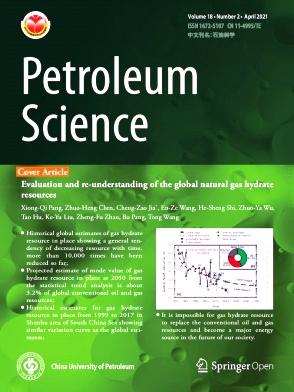Coupled effects of paleofluid evolution on ultra-deep microbialite reservoir modification: A case study of the upper Ediacaran Deng-2 member within the Penglai area of Central Sichuan Basin, SW China
IF 6
1区 工程技术
Q2 ENERGY & FUELS
引用次数: 0
Abstract
Paleofluid-rock interaction results in the modification of the ultra-deep reservoir quality, but the coupling effects of the paleofluid evolution on reservoir quality modification are still underestimated. Here, the multi-stage dolomite cements have been studied by means of core observations, thin section identification, fluid inclusions, and in situ elements and isotopic analyses in order to reaveal the paleofluid evolution processes and their effects on the reservoir quality. The fibrous dolomite cement (FDC) and bladed dolomite cement (BDC) both have similar geochemical properties and homogenization temperature (Th) to the matrix dolostone. Subsequent early silicification occurs (QZ1). However, silt-to fine-sized crystalline dolomite cement (CD2) has higher concentration of Fe and medium rare earth element, more negative δ18O than for FDC and BDC, and 103.4–150.2 °C in Th. The first petroleum charge episode solid bitumen 1 (SB1) followed the CD2. The medium to coarse sized crystalline dolomite cement (CD3) is characterized by the higher Mn and lower Sr concentration than CD2, positive δEu anomaly, negative δ13C and δ18O, high 87Sr/86Sr ratio and 138.9 °C–184.3 °C in Th. The solid bitumen 2 (SB2) occurs after CD3. Subsequently, the saddle dolomite (SD) has higher Fe and Mn concentration and lower Na and Sr than others cement, δEu positive anomaly, negative δ13C and δ18O, high 87Sr/86Sr ratio and 177.5 °C–243.6 °C in Th. Eventually massive silicification (QZ2) took place. The FDC, BDC, QZ1 and SB1 formed in the early diagenetic stage and have little negative effect on the reservoir quality. But the CD2 and CD3 dramatically decreased the reservoir quality related to a quantity of hydrothermal fluids entrance in the mesodiagenetic stage along the strike-slip faults and the unconformity surface at top of the Deng-2 Member during the late stage of the Caledonian orogeny. The reservoir spaces were retained and enlarged during the late diagenetic stage when the peak petroleum charge occurred, massive silicification and thermochemical sulfate reduction took place with SB2, SD and QZ2 being formed. The research outcome may update our understanding on the retention mechanism and the insights for further hydrocarbon exploration of Precambrian ultra-deep microbial reservoirs.
求助全文
约1分钟内获得全文
求助全文
来源期刊

Petroleum Science
地学-地球化学与地球物理
CiteScore
7.70
自引率
16.10%
发文量
311
审稿时长
63 days
期刊介绍:
Petroleum Science is the only English journal in China on petroleum science and technology that is intended for professionals engaged in petroleum science research and technical applications all over the world, as well as the managerial personnel of oil companies. It covers petroleum geology, petroleum geophysics, petroleum engineering, petrochemistry & chemical engineering, petroleum mechanics, and economic management. It aims to introduce the latest results in oil industry research in China, promote cooperation in petroleum science research between China and the rest of the world, and build a bridge for scientific communication between China and the world.
 求助内容:
求助内容: 应助结果提醒方式:
应助结果提醒方式:


